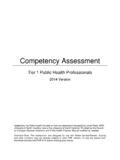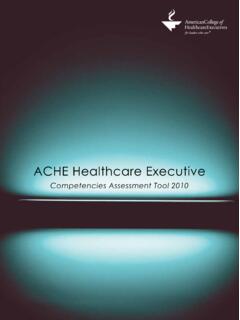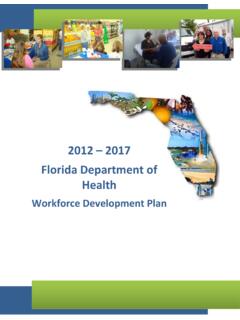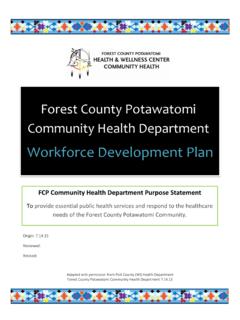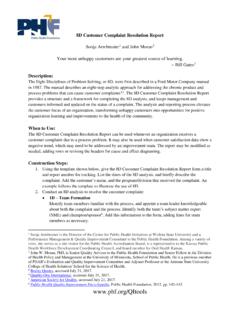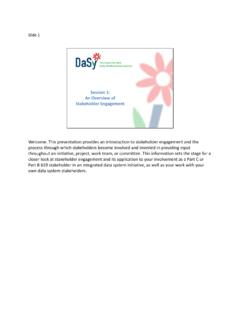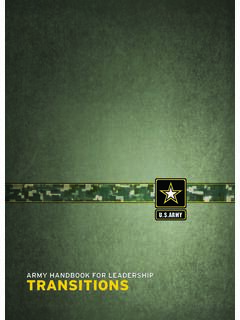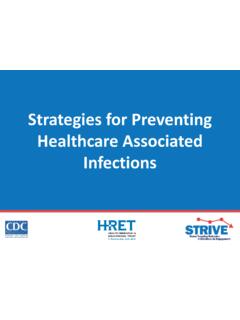Transcription of Change Management Questionnaire Checklist - PHF
1 Change Management Questionnaire Checklist L. Beitsch11and J. Moran22. April 2017. Description: Successful Change comes from developing an organizational atmosphere that is creative, risk- taking, enthusiastic, reflective, involved, and inspires people to Change . To achieve this elusive set of critical ingredients, the organization must create a positive Change momentum that contributes to a successful Change process and that goes for quick wins. Building and sustaining a conducive Change environment cannot be achieved without careful planning before, during, and after the Change initiative.
2 It requires the Change leaders to be constantly inquiring how things are going, if support is waning, identifying whether people are continually engaged, and determining if clear mid-course adjustments are being made based on what is being heard, seen, and sensed. Asking these questions will help to accelerate the Change initiative. Employees usually resist any Change efforts, no matter how small, because of the following five reasons3:3. 1. Fear of the unknown/surprise 2. Mistrust 3. Loss of job security/control 4. Bad timing 5. An individual's predisposition toward Change When to Use: The Change Management Questionnaire Checklist should be used when an organization decides to make a substantive Change to an entrenched culture.
3 When there is a need for Change and a desire to do it right the first time with proper planning, clear communication, thus reducing the organizational fear of disrupting the status quo, the Change Management Questionnaire Checklist can support these improvements by providing a list of guiding questions for discussion. 1 Leslie M. Beitsch, MD, JD, is Professor of Health Policy, Director of the Center for Medicine and Public Health, and Chair of the Department of Behavioral Sciences and Social Medicine at the Florida State University College of Medicine. He also is the former Chair of the Public Health Accreditation Board (PHAB).
4 2 John W. Moran, PhD, is Senior Quality Advisor to the Public Health Foundation and Senior Fellow in the Division of Health Policy and Management at the University of Minnesota, School of Public Health. He is a previous member of PHAB's Evaluation and Quality Improvement Committee and Adjunct Professor at the Arizona State University College of Health Solutions' School for the Science of Health. 3 Overcome the 5 Main Reasons People Resist Change , Lisa Quast, , November 26, 2012. Construction Steps: 1. The Change leader should identify and describe why and how the organization needs to Change .
5 2. The Change leader should define the objectives, goals and targets to be achieved, and by when. 3. The Change leader should develop a communication plan for the Change , including a clear concise message to be delivered to the organization. 4. Initiate a Management -level Change team, and task the team with the following: a. Review the questions listed in the Change Management Questionnaire Checklist , shown in the example. b. Determine which questions are most applicable to this Change initiative. c. Add any other applicable questions at the end of the template.
6 D. Decide which of the questions should be asked before the Change initiative begins, and check the boxes accordingly. e. Begin asking the selected questions to determine the organization's readiness to Change . For each, determine if the answer is Yes, No, Maybe, or Not Applicable, and check the corresponding box under the Readiness column. f. Review the completed Checklist . For any questions where the answer is not marked Yes, the team should determine how best to fill these gaps. Do not begin a Change initiative until gaps and barriers have been addressed, and has organization-wide support.
7 5. Once the Change initiative is underway, and periodically during the process, review the Checklist to assure there is continued support of the Change initiative. As the questions again During Change , to see if the answers have changed. This will assure that support of the initiative is being maintained. 6. After the Change initiative is completed, ask the questions marked as After Change . At the end of the Change initiative, all of the questions should be marked Yes. Change Management Questionnaire Checklist Template When to Ask Readiness Change Readiness Questions Before During After Yes Maybe No N/A.
8 Change Change Change Change Vision and Message Questions: Is there a clear vision of the Change to be made? Is there a clear and concise message about the Change ? Can the Change message be articulated to all levels of the organization? Is there sufficient passion for this Change for the team to be its champion? Does the message fully and concisely explain the value of the Change ? Is the message believable to all audiences? Is it clear what will Change ? Does the team understand the scale of the Change , including potential unintended consequences? Is there an established a sense of urgency for the need for this Change ?
9 Change Goals: Is there goal clarity and knowledge of exactly what to achieve? Are the Change goals realistic? Are the goals believable? Can the achievements and progress be measured? Is there goal alignment with the strategic plan? When to Ask Readiness Change Readiness Questions Before During After Yes Maybe No N/A. Change Change Change Change Plan: Is there a Change plan that sets up a series of quick wins to build momentum ? Is there a plan to deal with the technical challenges of the Change ? Are the right systems in place to support the Change ? Is there understanding of the adaptive changes people will have to make?
10 Is there a plan to deal with these adaptive changes? Are these adaptive changes clear? Is the discussion focused on the conceptual side of the Change (not the details of how to do it)? Management : Is the Management team on board and ready to support the Change ? Are people's concerns being heard and responded to, rather than dismissing them or failing to hear them? Will the Management team roll-up their sleeves and get fully involved? Will senior Management demonstrate a behavior that is fully supportive of the Change initiative? Do the employees have trust in the team?




